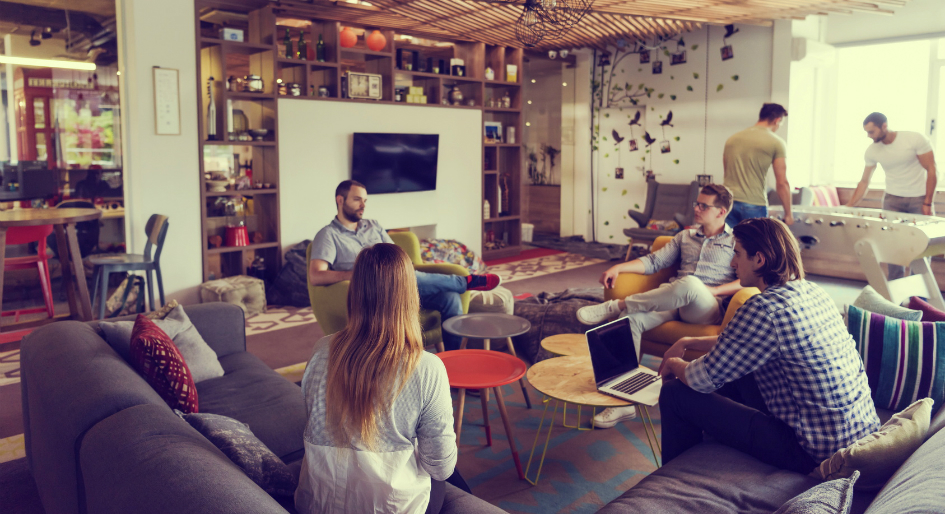2017 marked the first full year with Generation Z in the workforce — a cohort typically defined as being born between 1995 and 2012.
Gen Z is a distinct generation and not to be grouped in with their Millennial counterparts. From their expectations around technology to their preference for work–life blend over balance, these employees are already reshaping the workplace in new and exciting ways. By understanding a few core characteristics, organizations can learn how to engage Gen Z employees more authentically and harness their talents to the fullest.
In particular, Gen Zers need an environment where they can invent, create and get the job done — and there are some strong generational preferences for managers, workspace designers and service providers to consider.
Tech is the breath of life
The brightest talent will beat a path to strong digital brands that not only connect with Gen Z through a compelling employee promise, but who can also make this a lived experience in the workplace. Smart tech is a must-have. Research carried out by leading generational demographer Claire Madden with Australian Gen Zers mirrors a demand that is echoed globally among their peers. They will not accept anything less than a fast network and a functional workplace. Top of the least-favorite list? Slow Wi-Fi, of course.
Gen Z guru David Stillman also sees binary code embedded in Gen Z’s DNA, noting that the distinction between the physical and the digital worlds has completely disappeared for the members of what he refers to as the “Phigital Generation” — with implications for how they live, work and play.
Nevertheless, Stillman also finds that these tech innates continue to put a premium on face time offline. Eighty-four percent of those he surveyed in the U.S. said they would prefer to communicate in person with their boss.[1]
New expectations for space design
Employers should not assume that Gen Z’s compulsive social networking, both online and off, equates to always wanting to cohabit the workspace. According to David Stillman, this group would sooner share socks than share an office. Fiercely independent, focused on the task in hand, and sensitized to privacy concerns, only eight per cent in Stillman’s studies favour open plan workplaces.[2]
In the war for talent, live–work–play amenities, from onsite banks and food stores to gyms, hold strong appeal for a generation that doesn’t differentiate between work time and life outside of work. Facebook, for instance, has plans to create a mixed-use village in California that will include a grocery store, a pharmacy and 1,500 housing units for employees at below-market rates.
“Third space” is another idea that’s gaining traction. If home is the first space and work is the second, “third space” combines the best of both. Think non-corporate, distinctively designed spaces that reflect the organization’s culture and encourage social interaction. As one example, WeWork’s Shanghai office offers cozy booths overlooking a sun-filled atrium, and a tropical-themed retro kitchen where employees can take a break over coffee.
A health-conscious generation
From workplace wellness programs with smart mobile apps that incentivize healthy behaviors to a variety of well-designed workspaces, organizations should be supportive of Gen Z’s ambition to work and live at a fast pace, without compromising health and well-being.
The good news is that Gen Z has a better understanding than previous generations of the link between nutrition and health. And with the average life expectancy now well into the nineties, members of this cohort won’t expect to retire at age 65. They know that staying healthy will be paramount to their quality of life and to their long-term career success.
Gen Z is highly tuned into the global foodsphere and is the most well-traveled generation when it comes to ingredients. Add the strong driver to do no harm and it’s no surprise that almost three-quarters are willing to pay more for products and services that come from ethical brands.[3] This is a preference that businesses would do well to attend to when it comes to on-site amenities.
The outlook for organizations
It’s clear that Gen Z brings a unique set of expectations to the workplace — around what they need to be effective, and more importantly, what they need to be happy and healthy. Understanding what makes Gen Z tick is key to tapping into a positive energy that can motivate the wider team and help keep the organization relevant.
The preceding article is excerpted with permission from Sodexo’s 2018 Global Workplace Trends Report. Getting Ready for Gen Z is one of seven trend reports, which can be accessed at https://www.sodexo.com/2018-workplace-trends.
Experts consulted by Sodexo
Claire Madden is a leading social researcher, keynote speaker and media commentator interpreting social trends and implications of generational change. As Australia’s foremost social researcher on generational engagement, she provides intriguing insights into the minds and motivations of Generation Z in her latest book, Hello Gen Z: Engaging the Generation of Post-Millennials.
For nearly 20 years, generational expert David Stillman has been researching, writing, consulting and speaking about the generations for a wide variety of leading organizations. Co-authored with his Gen Z son, Jonah Stillman, David’s most recent study—Gen Z @ Work—is an insightful, mythbusting exploration of how this next generation is transforming the workplace.
References
- http://www.genzguru.com/
- https://tuco.ac.uk/images/zoo/uploads/documents/TUCO_Global_Food.pdf
- http://www.genzguru.com/
- David Stillman, original interview conducted October 2017





When #Architects #InteriorDesigners #ProductDesigners #PDFDesigners #WebDesigners design for the #matureworker #matureclient #MatureCustomer #aging #PeoplewithDisabilities #PwD using #UniversalDesign Principals then the need to design for specific age categories or #abilities or sizes or capabilities is NOT required. Learn more from our Architects, Interior Designers, Ergonomic/Human Factors Design, Accessible Technology experts at Optimal Performance We would like to extend this invitation to @REMINetwork as your writers will be interested in learning more about this topic – April 10th at Steelcase and April 11th at BOMATO